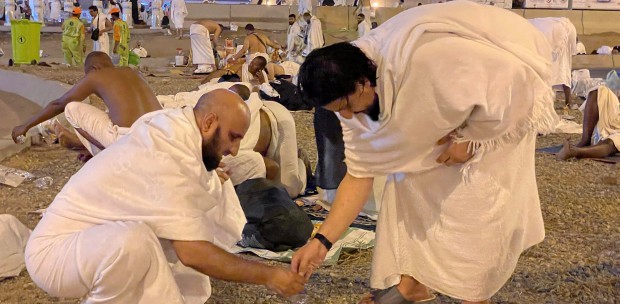MINA: All Malaysian haj pilgrims completed the first part of the Stoning of the Devil ritual on Friday, with each casting seven pebbles at Jamratul Kubra.
The symbolic gesture signifying the renunciation of the devil takes place over four days at the massive, three-storey Jamrat Complex, a 3.5km walk from the Malaysian tents at Mina.
After casting pebbles at Kubra, the biggest of three walls representing the devil, pilgrims can change out of their ihram and wear normal clothes for the remainder of their haj.
Over the next three days, they will make up to three more trips to the complex, throwing pebbles at all three walls – Jamratul Sugra, Wusta, and Kubra.
"Throughout the stoning ritual, we advise the pilgrims to take care of their health. They should avoid walking in extremely hot weather because it can cause heatstroke," Tabung Haji (TH) Masyair operations director Mohd Norber Kassim said.
He said pilgrims should follow the schedules and routes set by TH and Saudi authorities to avoid getting lost in the crowd and being unable to find their way back.
During haj, Mina is transformed into a city of white tents with a total population of more than 2 million pilgrims.
"So far, most of the pilgrims who completed throwing pebbles at Kubra have returned to their respective tents. A few lost their way and we sent help to them as soon as possible," Norber said at a briefing to Malaysian media.
TH has stationed officials at several checkpoints along the route to the Jamrat Complex, and has rescue teams that can be despatched to provide medical aid on site.
"So far, most of the health cases (we have seen) are related to cramps, fatigue and heatstroke," said Norber, adding that the TH Operations Centre in Mina also has a clinic.
There are walkalators in the tunnels to and from the complex, as well as water cooler stations. Saudi volunteers along the route also spray water on the pilgrims to cool them down.
Walking back from the Jamrat Complex late Friday night, Malaysian media met several elderly pilgrims who stopped to rest their legs before continuing their long walk back.
Jaapar Ismail from Baling, Kedah, was one exception. While TH officers stopped to help his 80-year-old friend who had cramps, the 92-year-old refused any assistance.
"I'm okay. I'm 92 years old, and today is my birthday," he said, smiling.






